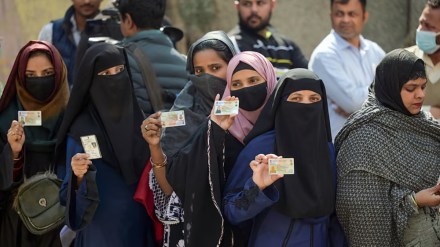Bihar Election 2025: Yogendra Yadav and Rahul Shastri, in their opinion piece for The Indian Express, have openly stated that Bihar’s final voter list under SIR is “hardly a cause of celebration”, suggesting that there’s more to worry about than taking a sigh of relief over the final figures.
‘As many as 80 lakh potential voters missing’
Yadav and Shastri argue that the true test of a voter list’s quality lies in how complete it is, meaning how many eligible adults are actually registered to vote. They recalled in their piece that after the draft voter list for Bihar was published, they had earlier pointed out (in their column “The Missing Voters,” The Indian Express, July 31) that the Special Intensive Revision (SIR) led to a worrying drop in the number of adults included from 97% to 88%. The final list shows a slight improvement, with 90% of adults now registered, but according to them, the overall situation remains troubling.
Citing official data, they note that Bihar should have had about 8.22 crore voters as per the Government of India’s population projections, but the final rolls list had only 7.42 crore, meaning nearly 80 lakh potential voters are still missing, which they say a serious concern rather than a reason to celebrate.
Yadav and Shastri say that some people are wrongly taking comfort in the final numbers, simply because the exclusions are smaller than the earlier fear of up to 2 crore deletions. But they argue that the real reason mass voter removal did not happen was not because of the Election Commission or its process, but because of the Supreme Court’s constant supervision, which pushed the ECI into what they describe as “damage control” mode.
‘Bihar SIR has adversely affected women and Muslims’
Yadav and Shatri further add that while detailed data on how the SIR has impacted marginalised groups like Dalits and migrant workers is still awaited, early signs already point to serious imbalances, especially in cases of women and Muslims.
They point out that women in Bihar have always been slightly underrepresented on the voter list compared to their share of the total population. This gap had been shrinking over time, from 21 lakh in 2012 to just 7 lakh in January 2025. But the SIR process has apparently reversed this progress, because now, the overall share of missing women voters has spiked to 16 lakh.
The duo further writes that for Muslims, the impact is harder to measure since the ECI does not record religion in its voter data. However, analysis using name-based software suggests that Muslims were disproportionately affected. They made up nearly a quarter (24.7%) of the 65 lakh voters removed from the draft rolls and a third (33%) of the 3.66 lakh names deleted from the final list, even though their population share is only 16.9%, as per the Census. This means that roughly six lakh Muslims may have been unfairly excluded from the final rolls.
Analysis shows over 24,000 gibberish names and 6000 invalid gender entries found
Yadav and Shatri have slammed ECI’s claim of “purifying” the voter list as they claim that Bihar SIR is filled with inconsistencies.
According to their analysis, the list contains more than 24,000 gibberish names which means they are just made up of random or unreadable characters. Then there are around 5.2 lakh duplicate entries, and over 6,000 invalid gender entries that don’t fit into the usual categories of male, female, or transgender. They also claim that there are also more than 51,000 faulty relationship entries that list relations other than parents or spouses, and over 2 lakh voters with missing or invalid house numbers (excluding those listed as “0”).
They note that this cannot be seen as a true voter list correction. In fact, more than 24 lakh households in Bihar now show 10 or more registered voters each, a pattern that even the Election Commission considers suspicious. These households together account for about 3.2 crore voters, and in many such cases, the final rolls have actually become less accurate than the earlier draft version.
Why is the EC not sharing data on ‘foreign voters’
Explaining why the Election Commission has avoided releasing data on foreigners whose names were removed from Bihar’s voter list, Yogendra Yadav and Rahul Shastri point to figures from the state’s election office website.
Out of 2.4 lakh readable records of objections to the draft rolls, only around 1,087 cases, which is barely 0.015 percent of all voters, were about people allegedly not being Indian citizens. Even among these, most turned out to be questionable, with 779 being “self-objections,” where individuals oddly claimed they were foreigners themselves. Many of the rest were likely Nepali citizens, as only 226 of these names were Muslim.
Ultimately, the EC accepted just 390 of these objections, deleting those names from the rolls, and only 87 of them were Muslims. The writers note that with such small and uncertain numbers, it’s no surprise that the Chief Election Commissioner isn’t eager to make this data public.
